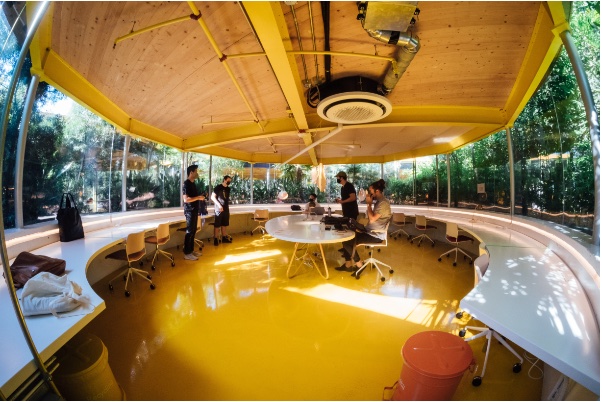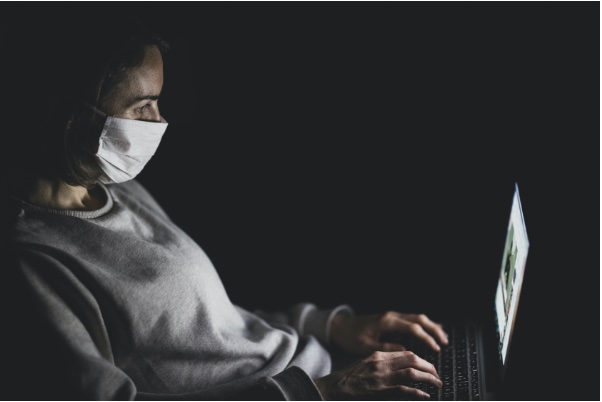FRANCESCO RODELLA | Tungsteno
With video calls, file sharing in the cloud, business chats, virtual cafés, and living rooms and bedrooms transformed into offices, in just a few months the work environment of millions of people has been completely upended by the COVID-19 pandemic. Many have discovered more flexible and life-enhancing ways of working, as well as innovative technologies and tools that can streamline tasks and improve productivity and efficiency. For others, all this has meant more personal stress and isolation, more job supervision and demands, problems arising from a lack of resources or digital skills, or simply less free time. To what extent and with what consequences is teleworking here to stay?
While the circumstances of the pandemic have brought about challenging working conditions for almost everyone (and put millions of jobs at risk), the degree of preparedness to adapt to new models and the individual experiences as a result have varied greatly depending on the sector or the profile of the people employed. Companies and workers have been able to "experience the advantages and disadvantages of this form of work, which was previously very limited," explains Enrique Fernández-Macías, a researcher at the Joint Research Centre of the European Commission. "The available evidence indicates that both sides have valued this experience positively, but have also identified problems," he adds.
The sudden jump to the virtual model
A survey by the European Foundation for the Improvement of Living and Working Conditions concluded that as of July 2020, when many European countries had already made it through the first wave of the COVID-19 pandemic, 48% of employees had been working in the previous months at least partially remotely, and one in three totally remotely. Before this health crisis began, the situation varied greatly from country to country, according to Eurostat data. In the Netherlands, 14% of people were already used to this model. In Bulgaria or Romania, less than 1%.
The same pattern has also been seen in Spain, where the number of employees teleworking has gone from less than 5% to between 20% and 30% in a few weeks, explains Fernández-Macías. In his opinion, it is very difficult to know what will happen when the situation returns to normal, but teleworking will most likely stabilise at a higher level than before the pandemic, but lower than in recent months.
For Néstor Ortiz, a web and graphic designer employed by a small company in Madrid, the outbreak of the pandemic has meant moving from the previous totally on-site model to one that is 100% remote in a "very abrupt" way. According to this 30-year-old from Toledo, "in this case, the teleworking model had not been adopted on a regular basis due to a lack of both habit and the necessary software and equipment, despite the fact that almost everything produced by this eight-person company was already purely digital."
"This familiarity with digital tools and products meant, however, that adapting to the new reality didn’t really take too much time," says Ortiz. There were aspects that made the transition easier; for example, according to him, he and his colleagues had the option of taking equipment home from the office, and digital tools designed explicitly for remote work began to be used, such as video call applications and time clocks to record productive hours. In addition, shared files began to be uploaded to the cloud rather than to a local network. And the positive results didn't take long to appear. "In our case, the experience has been very satisfactory," he says, "and we have continued to work and produce the same and even better."

The outbreak of the pandemic has imposed the use of innovative technologies and tools in order to streamline tasks and improve productivity. Credit: Olia Danilevich.
The need for a mixed model
"For many workers and employers, the partial telework model will probably be the most desirable and the most widespread after the pandemic," argues Fernández-Macías. The secret of this formula, he stresses, is that it allows us to enjoy its main advantages, such as flexibility and cost savings, and limit its principal drawbacks, which include disconnection and isolation. Ortiz believes that this solution would be perfectly applicable to his case, because it would add, alongside these benefits, others such as being able to "go to the office from time to time to feel that you are still part of the same company."
For Davide Politano, also 30 years old, the experience has been completely different. He works in secondary schools in northern Italy as a teacher specialising in the care of students with disabilities. The peculiarities of his position has made it a challenge to adapt to the dimension of working without personal contact. One of the main difficulties, he explains, "is knowing whether the student has understood" what he is trying to convey from a distance, as well as the increased "slowness" of the entire learning process. And he provides an example: "For a maths exercise, now [the students] have to do it, send me a photo, I point out any errors, or I send them a photo or video with the corrections... for two exercises it can take almost an hour and a half."
However, not everything has been negative, he acknowledges. For example, he found it useful that the increased habit of making video calls allows him to maintain a more fluid dialogue with the students even outside school hours, when they need help with their studies, he says. Another aspect is that it is now more "convenient" to organise work meetings between teachers, he adds.

Although more than 50% of employment can be adapted to telework, the work model that is imposed in the future will depend a lot on the sector. Credit: Paul Haoka.
The challenges of the distance learning formula
"A key to distinguishing which sectors will see the most benefit from following this new way of working is to assess the extent to which they require interaction with objects or people and involve communication and social interaction," says Fernández-Macías. As a result of this analysis, he concludes that in finance, telecommunications, education, professional activities, real estate activities and public administration, "more than 50% of employment can be done remotely", which means that "in the future they will most likely be above average in terms of teleworking."
For the time being, the new work environment, apart from proving to be a viable way to achieve greater efficiency and optimisation of resources, both for private companies and, for example, for the public administration, also poses important challenges. These range from guaranteeing security —according to Interpol, cyber-attacks during the pandemic have multiplied, especially against large corporations and essential infrastructure— to the conditions of the workplace itself: connectivity, work-life balance or who bears the costs derived from the work activity.
· — —
Tungsteno is a journalism laboratory to scan the essence of innovation. Devised by Materia Publicaciones Científicas for Sacyr’s blog.
